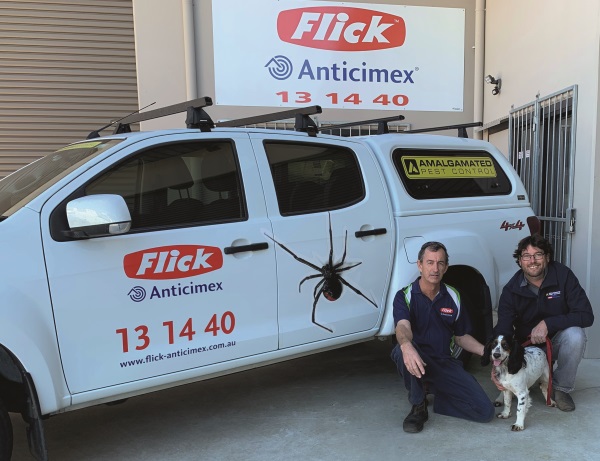Dogs take bite out of termite damage
A keen sense of smell and the ability to navigate awkward spaces makes dogs the perfect termite busters. Anna Hayes found out more.

When we think of damage to our homes, our minds instinctively turn to natural disasters like fires, storms and floods.
In reality, the biggest danger is often much smaller and harder to find.
Termites will affect one-in-three Australian homes, according to surveys. In many cases, home insurance policies will not cover the destruction caused by termites. This leaves people with damaged homes and no back-up.
Termite damage is something that often goes undetected until it is too late.
There are plenty of termite detection options. Flick, however, offers something a little bit different; it is teaming up with a four-legged friend to track down the troublesome pests.
The company has been using dogs for the detection of termites and termite damage for the past five years. It offers its service in Adelaide, Ballina, Gold Coast, Melbourne, Sydney and Brisbane. At present, it has six dogs with a new pup, Ollie, due to start his detecting career very soon.
The dogs are trained by Flick Anticimex’s national dog handler and trainer Gavin Skinner who explains that the dog’s keen sense of smell is one of the greatest assets they can have when they are carrying out an inspection.
Flick Ballina branch manager Dan McCafferty says that, on any new job, they always do a timber pest inspection to Australian Standard 4349.3.
Following that, the dog is brought in to inspect the external area before moving inside. Handlers pay close attention to the dog’s reactions and make note of points of interest for further examination.
The dogs offer an extra dimension to inspections, not only because of their sense of smell but also their agility which allows them to access areas that people couldn’t, including tricky roof spaces.
The dogs are trained from a young age and Gavin explains that the key factor is to familiarise them with the scent of termites and encourage them to search for it.
“It depends on the dog but some can be out on inspections after six months. Most take between six and 12 months. We like dogs that have a bit of drive,” says Gavin, adding that a lot of their dogs are English working cocker spaniels. Rewards for a good training session come in the shape of playing with a tennis ball rather than food as the latter is more likely to distract them from their task.
“Once they get the scent training, we move on to more advanced training such as distraction odours. They’re trained to ignore things like other animals and food and that’s why we don’t use it as a reward because it can be a big distraction when we’re out on inspections,” Gavin explains.
The dogs are particularly good on problem jobs as they can detect old damage and where termites are accessing a building.
“For example, in a house with termites, you can permanently solve the problem if you know where they are getting in. The dogs can find that quite easily whereas, before, the only way to do that was to remove the walls. If we have a specific location that we can focus on it makes it more cost effective,” says Dan.
Generally speaking, one dog is used per inspection but in cases of bigger buildings a second dog might also be used.
Currently, there aren’t too many other businesses, aside from Flick, using detection dogs, Dan says. The work and responsibility of training and keeping the dogs makes it prohibitive for most.
“There is the odd solo operator but none on as large a scale as us,” he says, pointing out that the dogs are a costly investment. They also require continuous training, as well as specialised vehicles that adhere to RSPCA standards for transporting them.
“We feel that it does give us the edge over competitors. It’s an additional tool that helps us to provide a more extensive service and lets people feel that they are getting value for their money,” he says, explaining that they are hoping to extend the service, getting the dogs out to more of their branches around the country.
All of their services, he adds, come with a 12-month warranty but the termite dogs have had an excellent track record to date.
